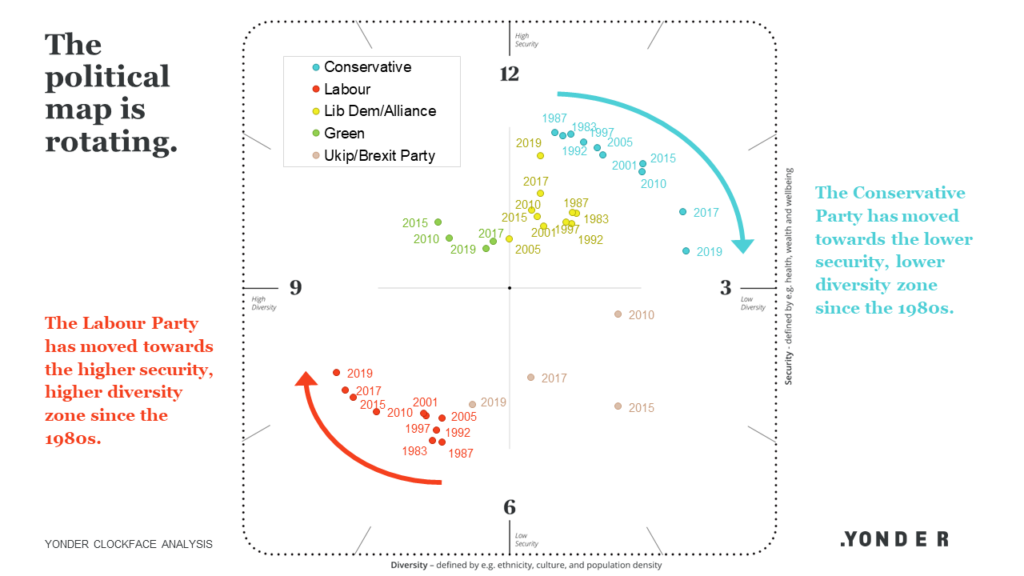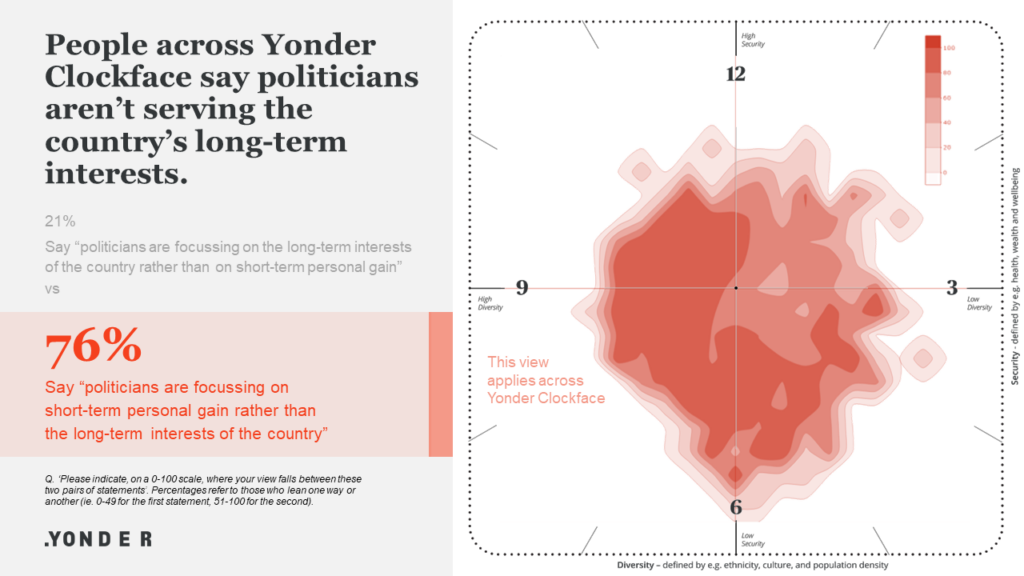And the state of play that corporate affairs and policy strategists must understand
Regardless of your beliefs or who you normally vote for, there is a good chance that you feel underserved, underwhelmed, perhaps even dismayed by the political menu in front of you.
You may well think that the main parties don’t offer something that speaks to you or that meets the moment we’re in. That they seem distracted and distant from your life – bickering with each other and buffeted by the wind, while the world becomes more complex and the big questions remain unanswered.
If you do, you’re not alone. This is the picture emerging from our large-scale programme of polling and focus groups in conjunction with the Britain Project and the Tony Blair Institute for Global Change. We find that disillusionment with politics isn’t confined to one group – it reaches into nearly all corners of the political map. And, importantly for the new Prime Minister, it’s bigger than Boris Johnson, bigger than the Conservatives, and bigger than Brexit.
Both change-makers and business leaders must understand what’s behind this if they want to anticipate what comes next and to get on the right side of public opinion and public policy. We are going through a period of profound political, social, and economic upheaval. To chart a course through this, as a corporate affairs strategist, comms specialist, or policy shaper, you have to see the present situation with clarity and know how we got here.
So what’s going on? When it comes to modern politics, why do so many people feel like something isn’t connecting?
To answer that, we need to go back to the 1980s.
Because part of the explanation lies in the way the ground is shifting.
Yonder Clockface is a way of viewing macro trends with precision. It is a model that explores the full spectrum of public attitudes, and is rooted in two bundles of related factors, which we call ‘diversity’ and ‘security’. These two factors help to explain people’s behaviours and attitudes towards a whole host of issues.
We can use them to visualise the entire population on the face of a clock.

In this image, Yonder Clockface shows us how the political map is rotating.
In the 1980s, the average Conservative voter was found close to 12 o’clock. Here, you’re likely to encounter, say, owners of detached houses with multiple cars in the driveway, several digits in the pension pot and access to private health care.
Fast-forward to the present day, and the picture looks very different. The Conservative Party is now anchored close to 3 o’clock – low on diversity, but only moderately secure. Among these voters are a greater number of lifelong residents of post-industrial towns, coastal areas and agricultural communities.
Labour too has been carried clockwise around the dial.
Its average voter has moved from a 1980s centre point at 7 o’clock – where the Party’s working-class roots made it the natural choice – towards 8 o’clock. That means its new coalition is characterised by increasing proximity to diversity and increasing (though still below average) economic security.
So the traditional parties have become unmoored from their old bases. With an electorate in flux – accelerated by Brexit, globalisation, immigration, the cost of living crisis – the Conservatives and Labour are having a tough time defining themselves and who they really stand for.
They struggle to reconcile their traditional ‘brand story’ with the new sets of values and voters they must appeal to. Their parliamentary members are an uneasy combination of the old and the new, and they are at risk of internal conflict and division. Many of their former heartland voters feel unspoken for and unrepresented.
The result: a creeping sense of stagnation across the country and a feeling that politicians are mired in short-term skirmishes to shore up whatever support they can get, rather than presenting a bold, long-term vision that is the equal of tomorrow’s challenges

“I’d probably say [that Britain is] at best stagnant. I feel like the future’s very uncertain. There are a lot of changes happening, Brexit and so on, but I don’t feel like any of us really understand what’s going to happen.” Focus-group respondent on Britain
“There isn’t a strong enough understanding of what the vision is and where we’re going to go. There’s so much flipping and flopping, and it doesn’t feel like there is a long-term plan for where you want to get to.” Focus-group respondent on the need for a vision
“I’d really want to see somebody now coming forward [who says] ‘we are out of Europe. Now this is how I’m going to create jobs. This is how I’m going to reform the British economy, and this is how we’re going forward’. Give us a clear direction.” Focus-group respondent on the need for new ideas
In all of this lies an opportunity for those who are able to offer a future-facing, positive vision that can excite different people across the clockface – appealing to those who feel politically homeless and underserved, without falling into the trap of pandering to vocal but ultimately small groups of unusually engaged voters.
Yonder Clockface analysis shows a similar set of battlegrounds and demographic trends at play in developed Western democracies around the world. These forces are acting upon the old political parties everywhere, and they are creating gaps and opportunities for those able to take them.
There is a lesson in this for organisations everywhere. The underlying factors that fuel these trends are the same ones that determine how we think about life in general, how we relate to the people around us, which issues concern us and which organisations we connect with. No corporate affairs, political or comms strategy can be successful without knowing what makes different people tick in a world that is realigning, faster and faster, around the clock.
To build an effective movement and generate impact in any walk of life you have to recognise that the world is changing and that this inevitably means getting to grips with new patterns and zones of opinion and experience. If you don’t, you’re doomed to irrelevance, and something else will eventually take your place.
Do you want to understand more about the forces shaping public opinion and what that means for your organisation? We’ve only shown a brief glimpse here of what Yonder Clockface can uncover. It’s used by executive teams and strategy directors across all industries to understand what’s driving the environment they operate in and what’s likely to come next. It can explain social, cultural and economic trends like Brexit, what action people expect from businesses on climate, and what choices the cost of living crisis will force people to make. It can deeply, and simply, explain everything from the response to your pricing strategy through to why you like the TV shows you do
Get in touch for a complimentary briefing from one of our political & corporate affairs experts.
Confidently predict how audiences will respond to your business initiatives.
